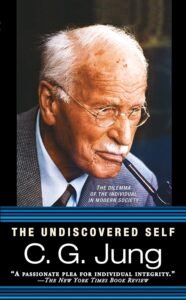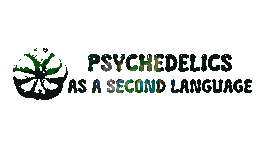What is shadow work?
Meeting people every day and engaging is part of our everyday social life. When meeting someone new, we always tend to express the best version of ourselves. We often transmit such a version or many others onto our social media, and we tend to create a version of ourselves that we want others to know us as.
Contrarily, we also tend to keep certain parts of ourselves hidden from the general public, as we might find them unpleasant or cannot tolerate acknowledging them. Carl Jung described such a term as the shadow.

Such traits become ingrained into us by observing behaviors we despise while growing up or as a mechanism to cope with certain forms of trauma.
In the long term, we often collide with people representing or reminding us of the same shadow traits we decide to repress or have observed in the past, making us have negative reactions because we don’t want to be associated with such behavior, or we may resent that other people get to express those sides of themselves while we repress them.
We often are unaware of our shadow self, as we have dealt with them for such a long period it becomes part of ourselves, part of our ego, which often comes out when we cannot control ourselves, for example, in periods of stress, exhaustion, or even altered states.
The only form to be conscious of this shadow is to recognize the dark aspects of the personality as present and real. This act is essential for any form of self-knowledge.
For this reason, psychedelics have made its space as tools for shadow work throughout the years. One of the many pioneers was the Jungian psychoanalysis enthusiast Ann Shulgin.
Ann would say:
“Whereas Sasha was a genius in chemistry. It was me who understood people and the complexities of the psyche.”
Ann became a pioneer in exploring MDMA and 2C-B as therapeutic tools. As a lay therapist, she developed methods of working with these materials and provided counsel and mentorship to many. Being fascinated with Jung’s work, she became skilled in doing shadow work with clients and mentored other therapists in the process.
(Read more about Ann Shulgin’s work with MDMA here!)
So, how can psychedelics aid with shadow work?
Unlike other articles on this website, pharmacodynamics won’t be the focus in this field. Instead, we will focus on the subjective effects of various compounds and understand how well they might work to understand one’s shadow.
When we think about psychedelics, we often imagine substances that induce visual effects. Such substances won’t be ideal for shadow work. Instead, compounds with subtle effects will be superior for this type of therapy, especially those in the empathogens-entactogens class.
Among this class are the following compounds:
Phenethylamines
-
- 2C-B
-
- 2C-T-2
-
- 2C-T-7
-
- Metaescaline
Substituted amphetamines
-
- 3-Chloromethamphetamine
-
- 3-Methoxymethamphetamine
-
- 4-Fluoroamphetamine (4-FA)
-
- 5-(2-Aminopropyl)-2,3-dihydro-1H-indene (5-APDI, IAP)
-
- 6-(2-Aminopropyl)benzofuran (6-APB) (benzofury)
-
- 5-(2-aminopropyl)benzofuran (5-APB)
-
- 5-(2-methylaminopropyl)benzofuran (5-MAPB)
-
- 5-Methoxy-MDA
-
- 5-Methyl-MDA
-
- Methylbenzodioxolylbutanamine (MBDB)
-
- Methylenedioxyamphetamine (MDA)
-
- Methylenedioxyethylamphetamine (MDEA)
-
- Methylenedioxymethamphetamine (MDMA)
-
- Methylenedioxyhydroxyamphetamine (MDOH)
-
- Methamnetamine
-
- Lys-MDA
-
- Paramethoxyamphetamine (PMA)
Substituted aminorexes
-
- 4,4′-Dimethylaminorex (4,4′-DMAR)
-
- Methylenedioxy-4-methylaminorex (MDMAR)
Cathinones
-
- Mephedrone (4-MMC)
-
- 3-Methylmethcathinone (3-MMC, metaphedrone)
-
- Methylone (βk-MDMA)
-
- Butylone (βk-MBDB)
-
- Flephedrone (4-FMC)
-
- TH-PVP
Tryptamines
-
- α-Ethyltryptamine (αET)
-
- α-Methyltryptamine (αMT)
Aminoindanes
-
- 5-Iodo-2-aminoindane (5-IAI)
-
- Methylenedioxyaminoindane (MDAI)
-
- MDMAI
(NOTE: These are not health tips! We don’t advise taking these compounds outside a clinical institute or supervised by health professionals. If you do so, you are at your own risk.)
Currently, only MDMA and 2C-B have been used for the sole purpose of clinical shadow work. However, considering the molecular structure of the mentioned compounds and the scientific revolution of psychedelic compounds, it is highly likely that some of these compounds become legalized and used as various types of tools to explore and treat mental illness.
But what are empathogens, and what do they do?
Those who have experienced MDMA or 2C-B can surely tell you that upon uptake, you will feel more compassionate, more able to explore your emotions, and be able to open yourself more towards people, in this case, your therapist. By doing so, your therapist will be able to:
- Recognize shadow aspects; Notice certain repeating behaviors in your life.
- Label shadow aspects: try to backtrack and identify what’s happening or what kind of things bring these parts of you.
- Identify with the shadow aspects; Figure out where/what the behaviors might be coming from.
- Help you own the shadow aspects; Guide you to accept that these things are ongoing patterns in your life, something you are responsible for catching yourself doing and then changing.
- Considering the shadow self is something we often are unaware that is present in us, experiencing this time of self-work might have various benefits, being the most prevalent:
- Understanding that our shadows have both positive and dark sides to them, and we choose to label them as dark and try to repress them and that accessing the positive of these traits can make us more creative and help us grow
- Understanding that our shadow hurts us more and hurts others less, as when we don’t know we possess a shadow, we have a distorted view of the world, one based on trying to maintain our self-concept, our sense of who we are, putting us at risk of projecting our shadow onto other people, hurting our relationship in the process.
- Additionally, ignoring parts of who we are can be very demanding and energy-consuming. When we consume energy to repress ourselves, we are not using our energy elsewhere in life. Once we stop repressing ourselves and begin the integration process, we get some of that energy back!

Personal experience dealing with shadows
From here, I will tell a personal story not of myself but of someone with a shadow I’ve witnessed closely over almost 20 years.
My uncle was born in the late 1970s. During this period, mental health awareness was far less spread than it is today. Often, people misconceive depression with sadness, anxiety with being nervous, and the list goes on. From what my mother told me, my uncle used to be kind and a normal kid, just like pretty much everyone at a young age.
At the age of 12, he lost his right eye while watching people playing tennis after being hit with the ball. Four years later, he lost his left leg in a train accident. The train ran over his leg, making it partially cut below the knee after trying to salvage it in the hospital. The wound had gangrene, and doctors decided to cut his leg above the knee.
He became frustrated and quickly turned to alcohol and various other substances as a coping mechanism, compounds that until today, I have doubts he knew what he was taking, nor dosages.
Years later, when I turned eight years old, he started selling hashish. He found it as his only way out, considering the side-eyes he caught from everywhere he tried to get a job. Everyone seemed to think that amputees would throw clients off.
Most of the after-school time and summer, I would spend time with him, excused to say that at a very early age, I would recognize not only hashish but plenty of other compounds. I had witnessed how these compounds changed their minds, how they would act wild and reckless. For some time, I’d even consider myself afraid and anti-drug to an extent. Of course, everything would change once I did grasp reality and understood the misusage and recklessness of not even dosing such compounds when they were consuming them.
However, there was one drug that always seemed to make him more revolted, making him riot with violence towards everyone. He would yell at random people, threaten to kill them and cry about how society rejected him after the accident. That drug was alcohol. Despite his negative outcome and relationship with the drug, he always seemed to go back after various attempts at recovery, and several doctors warned him about liver problems and potential liver failure. It was his perdition, his addiction.
He always said that if he died while drinking, he would be a happy man.
His drinking issue affected not only his health but his relationship with others. He would be too violent towards everyone, even those who tried to help him.
When he wasn’t drunk, he would be kind and share love and heart. Alcohol would bring his shadow traits. Every time someone would bring out his actions when he was sober, he would say I never did such a thing and that it didn’t sound like him, that it must be a lie, so he would stop drinking.
Unfortunately, he always refused to get mental health in his latter years. He would always say that he was fine until the neurotoxicity of alcohol started to affect him. At the age of 45, he began showing signs of dementia. In his delirium states, he had stopped recognizing people. He wouldn’t know who he was. He wouldn’t even remember if he had drunk alcohol or not. All he knew was anger and frustration.
After a couple of months of intense care, he couldn’t use his crutches anymore to move around, so we had to purchase him a wheelchair. During his wheelchair era, he started being afraid to fall and with constant vertigo. At this time, he wasn’t drinking anymore. Thus, it could be due to withdrawal. It wasn’t long until my mother had to take care of him full-time. At this point, I had moved out.
Months later, he had constant fevers caused by withdrawals and a virus caught in the hospital, leading to his death two years ago.
Analyzing. it from another perspective, he could’ve benefited from therapy and shadow work. He had plenty of repressed anger. From having his teenage years stolen, being done dirty by people during his drug-selling era, leading to trust issues, being rejected by everyone and feeling that everyone has given up on you instead of trying to help you manage addiction, and falling in love with a compound without knowing any better.
Although his life has been as miserable as it may sound, I hope that it teaches you that addicts are still people. We shouldn’t walk out from them. Instead, we should help them understand that their relationship with the compound is abusive and provide them with adequate treatment.
We should analyze ourselves, know our traits, control our relationship with substances, be compassionate, and benefit from therapy when needed.
Stay safe!
